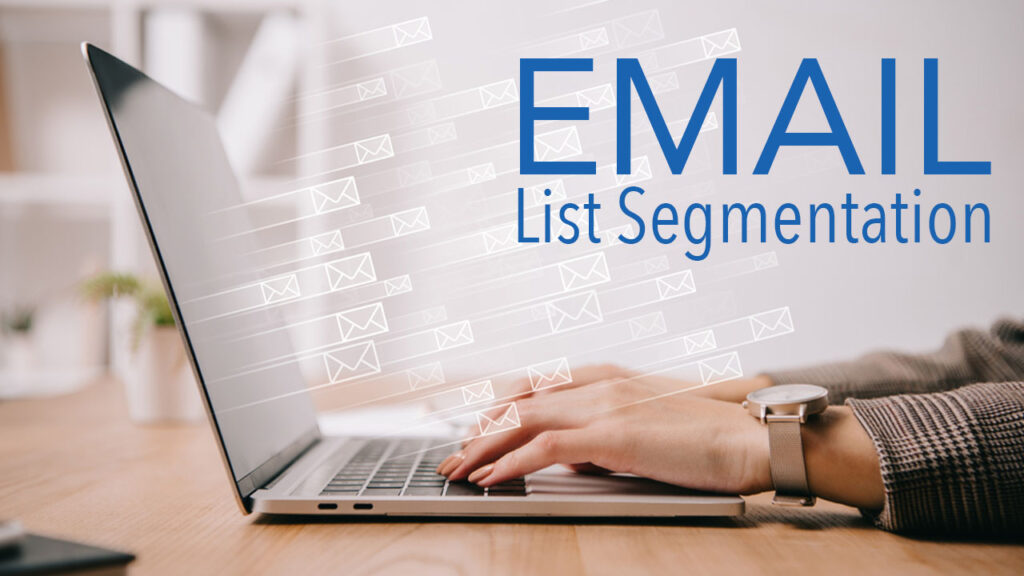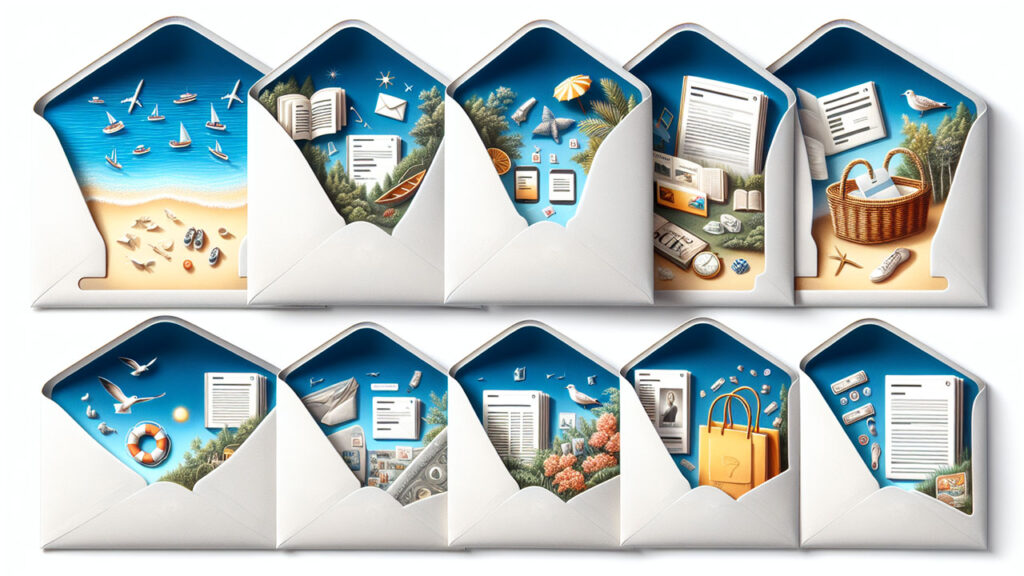Master Email Marketing: Top Email List Segmentation Best Practices for Higher Engagement
Brett Lewis
Digital Marketing - November 21, 2023

Are you seeking to elevate your email engagement rates through targeted communication? In this comprehensive guide, we’ll reveal email list segmentation best practices suited for precisely that goal. Learn how to identify and group your audience, craft custom content, and measure success—fundamentals that can transform your email campaigns into powerful engagement tools.
Key Takeaways
- Segment your email list based on criteria like demographics, purchase behavior, and engagement to ensure content relevancy and enhance customer loyalty.
- Regularly collect and leverage high-quality customer data, including behavioral insights and updated profiles, to create personalized email campaigns for different audience segments.
- Employ email marketing platforms and automation to create, manage, and optimize segmented lists and workflows for increased engagement and conversions.
Understanding Email List Segmentation

Email list segmentation is the unsung hero of successful email marketing campaigns. It’s more than just dividing your contact list into smaller groups. It’s about personalizing your approach and ensuring that your emails land in the right inbox, at the right time, with the right message. Think of it as your secret weapon in creating highly personalized emails that resonate with your audience, fostering customer loyalty, and boosting the effectiveness of your digital marketing campaigns.
Segmenting your email list allows you to tailor your messages to different groups based on a variety of criteria, such as demographics, past purchase behavior, and engagement levels. This means you’re not just sending emails into the void and hoping for the best. Instead, you’re ensuring that each group receives messages tailored specifically to them, leading to more relevant content and higher engagement rates.
Taking it a step further involves incorporating personal interests, geographic details, job roles, and demographic segmentation information into your segmentation strategy. This way, you’re not just sending emails; you’re creating targeted content for specific customers. A study of how Comcast and Skybound achieved remarkable results by segmenting their email lists based on interests and personalizing the content showcases the potential of this strategy. The possibilities are endless when it comes to nurturing loyal customers and supercharging your email marketing campaigns.
Crafting Your Segmentation Strategy

An effective segmentation strategy, akin to building a house, entails a strong foundation, careful planning, and the right tools. The three main pillars of a robust segmentation strategy involve identifying your goals, understanding your audience, and selecting relevant criteria.
Identify Your Goals
First things first, you need to identify your goals. What do you hope to achieve with your email marketing? Is it to increase engagement, drive sales, or maybe foster customer loyalty? Whatever your goals, they should be measurable and quantifiable.
Once you’ve established your overall marketing goals, you can then define your email segmentation goals and align them with your objectives. This alignment between your objective and audience is what will drive maximum impact in your campaign.
Know Your Audience
A second vital step is to comprehend your audience. Who are they? What are their needs? What are their preferences? Using buyer personas can help you unlock the potential of your email marketing.
Grasping the different types of target customers and their unique needs enables you to craft messages that resonate with each persona, thereby leading to a more successful segmentation strategy.
Choose Relevant Criteria
The final step is selecting the relevant criteria for segmentation. It’s like choosing the ingredients for a recipe. You want to select the ingredients that will help you achieve your desired outcome. In the case of email segmentation, these ingredients could be demographics, behaviors, or location.
Ensuring a successful segmentation strategy involves aligning these criteria with your marketing goals and comprehension of your audience.
Collecting and Utilizing Customer Data

Data, the lifeblood of email segmentation, fuels your campaigns and underpins their success. Exploring ways to collect and utilize customer data can help inform our segmentation strategy.
Source Quality Data
Much like a chef sources prime ingredients for dishes, it’s imperative to source quality data for your email campaigns. Accurate and up-to-date data will improve the effectiveness of your campaigns and ensure that your emails are reaching the right people at the right time.
Analyze Behavioral Data
Consider behavioral data as your secret sauce. It gives you insights into your subscribers’ behaviors and preferences, allowing you to tailor your campaigns to meet their needs.
Creating personalized and relevant content that drives higher engagement is achievable by analyzing website behavior and email engagement.
Update Customer Profiles
Lastly, it’s important to consistently update customer profiles. Just as your subscribers evolve, so should your data. By keeping your customer data current and accurate, you can avoid incorrect segmentation and ensure that you’re always sending the right message to the right people.
Segmenting for Success

Having laid the groundwork, it’s time to explore the diverse ways of segmenting your email list for success. We’ll look at three main areas: purchase history, engagement level, and position in the sales funnel.
By Purchase History
The purchase history of your subscribers can reveal a wealth of information. It can tell you what products they’re interested in, how often they make purchases, and even predict future buying behavior.
Leveraging this information allows for sending targeted product recommendations and offers, likely resonating with your subscribers.
By Engagement Level
Another vital factor to consider when segmenting your email list is the engagement level. Subscribers who frequently engage with your emails may be more receptive to your messages and offers than those who engage less often. By tailoring your content to match their level of engagement, you can increase the chances of them taking the desired action.
By Position in Sales Funnel
Comprehending the stage of your subscribers in their purchase cycle assists in tailoring emails to their needs. For example, subscribers at the consideration stage may benefit from product comparison guides, while those at the decision stage may respond better to testimonials or customer success stories.
By tailoring your content to their position in the sales funnel, you can provide relevant content and offers that move them closer to making a purchase.
Personalization and Content Relevance

To create emails that resonate with your subscribers, the key lies in personalization and content relevance. Let’s explore how we can tailor subject lines, customize content, and align offers with subscriber preferences to create a personalized and relevant email experience.
Tailor Subject Lines
Given that subject lines are the first thing your subscribers see, making them impactful is of utmost importance. By tailoring your subject lines to resonate with your audience, you can increase open rates and engagement with relevant messages.
Customize Email Content
Another vital step in curating a personalized email experience is to customize your content. By tailoring your content to match your subscribers’ interests and needs, you can increase engagement and conversions.
Align Offers with Preferences
Lastly, it’s beneficial to align your offers with the preferences of your subscribers. By sending offers that match your subscribers’ interests and needs, you can increase engagement and conversions.
Engaging Inactive Subscribers
Subscribers differ in their engagement levels; some are highly engaged, opening every email and clicking through to your website. Others may have gone dormant, rarely opening your emails or engaging with your content. But don’t lose hope! With targeted campaigns designed to reignite their interest, you can re-engage these inactive email subscribers and bring them back into the fold.
One effective strategy is to send a re-engagement email, asking if the subscriber is still interested in receiving your emails. You can also offer a special discount or exclusive content as an incentive to re-engage. By targeting these inactive subscribers, you can breathe new life into your email list and boost your overall engagement rates.
Maintaining a Healthy Email List
Now, it’s time to delve into the maintenance of a healthy email list. A clean, well-maintained email list can significantly improve the effectiveness of your marketing campaigns. Exploring how regular cleansing and user self-segmentation can contribute to maintaining a healthy email list is beneficial.
Regularly Cleanse Your List
Cleansing your email list involves removing inactive subscribers and incorrect email addresses. This not only improves your deliverability rates but also ensures that your emails are reaching people who are genuinely interested in your content.
Allow User Self-Segmentation
User self-segmentation is another powerful tool for maintaining a healthy email list. By giving your subscribers the option to choose their preferences, you allow them to self-segment, leading to more accurate segmentation and ultimately, more personalized and relevant emails.
Maximizing Conversion Rates Through Segmentation
Email segmentation serves dual purposes: improving engagement and driving conversions. By sending targeted, relevant content to your subscribers, you can maximize your conversion rates and boost your bottom line as part of your email marketing strategy.
Remember, the key to maximizing conversion rates is to align your segmentation strategy with your overall marketing goals. By focusing on your target audience and using data to create segments, you can effectively engage with your audience, including prospective customers, and boost your conversion rates.
Leveraging Technology in Email Segmentation
Stepping into the era of advanced technology necessitates leveraging its power to enhance your email segmentation efforts. Exploring how email marketing platforms and automation can bolster our segmentation strategies is a valuable approach.
Email Marketing Platforms
Email marketing platforms offer a range of tools and features that can help you with email marketing segmentation, effectively allowing you to segment your email list. These platforms provide pre-built segmentation options and customizable rules, making it easy to create and manage segmented lists.
Automation and Triggers
Automation and triggers are another powerful tool for improving your email segmentation efforts. By setting up automation workflows, you can:
- Send timely, personalized emails based on your subscribers’ behaviors
- Save time
- Ensure that your emails are relevant and timely
- Increase the chances of engagement and conversions
Monitoring and Optimizing Campaigns
Lastly, it’s time to discuss monitoring and optimizing your email campaigns. By analyzing metrics, testing segments, and adjusting based on feedback, you can continually improve your campaigns and maximize your marketing efforts.
Analyze Campaign Metrics
To measure the success of your email campaigns, analyzing campaign metrics is essential. By tracking metrics like open rates, click-through rates, and conversions, you can gauge the effectiveness of your campaigns and make data-driven decisions for improvement.
A/B Testing Segments
A/B testing is a powerful tool for determining the most effective segmentation strategies. By testing different versions of your emails on different segments of your list, you can determine which version yields better results and use this data to optimize your campaigns.
Adjust Based on Feedback
Lastly, it’s important to adjust your campaigns based on received feedback. By listening to your subscribers and making changes based on their feedback, you can continually improve your campaigns and ensure that they remain relevant and engaging.
Summary
In conclusion, email list segmentation is a powerful tool for boosting your email marketing performance. By understanding your audience, crafting a segmentation strategy, and leveraging technology, you can create targeted and relevant emails that resonate with your subscribers. Remember, the key to successful email segmentation is regular monitoring and optimization. Keep analyzing your performance, testing your strategies, and adjusting based on feedback to ensure your emails continue to hit the mark.
Frequently Asked Questions
How should you segment your email list?
Segment your email list based on demographics, past purchase behavior, engagement levels, position in the sales funnel, and other relevant criteria. Collect and use customer data effectively to create segments that will respond positively to your campaigns. Good luck with your email marketing!
What are some of the criteria for mailing list segmentation?
Segmenting mailing lists by demographic information or behavioral data, such as purchase history or email engagement, allows you to send more relevant messages to each group and provide the best customer experience with your emails. This helps in maximizing the impact of your email marketing efforts.
What is the difference between email lists and segments?
The main difference between email lists and segments is that lists are for organizing contact information and sending mass messages, while segments are for sending targeted messages and analyzing marketing performance. So, segments allow for more specific and focused communication with your audience.
How can I maximize my conversion rates through email segmentation?
Maximize your conversion rates through email segmentation by sending targeted, relevant content to your subscribers and aligning your strategy with your overall marketing goals. This will ensure maximum impact and improved results.
How can I monitor and optimize my email campaigns?
To monitor and optimize your email campaigns, analyze key metrics, conduct A/B testing, and adjust your campaigns based on feedback for improved results.
